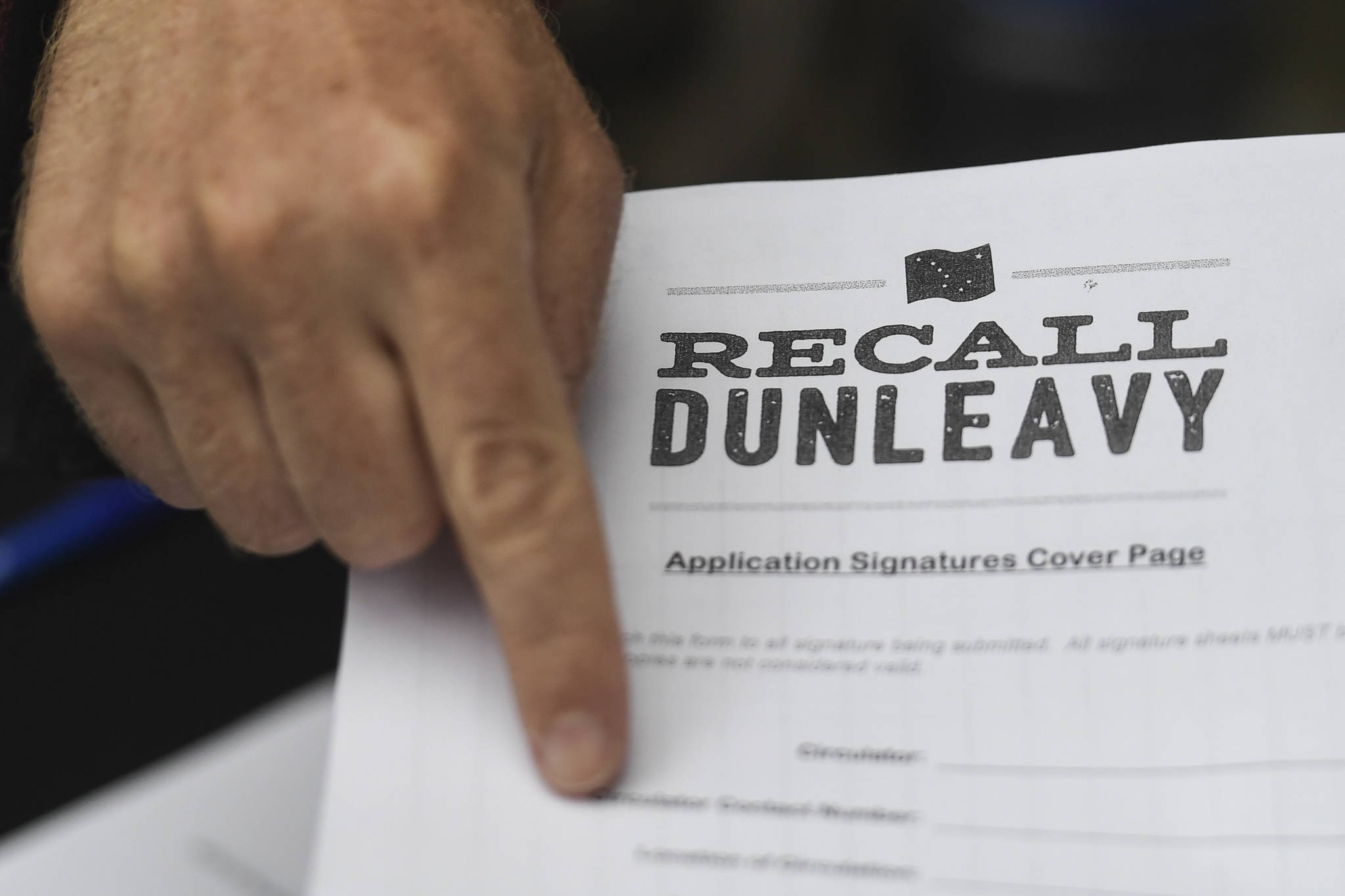The Recall Dunleavy camp is gearing up for the next phase of the campaign, whatever that may be.
The campaign is waiting on two decisions from the State of Alaska, and each of those decisions will set off its own chain of events.
“We’re gearing up for the phase that’s in front of us,” said Claire Pywell, campaign manager for Recall Dunleavy. But what that next phase is, isn’t quite clear.
The campaign submitted roughly 49,000 signatures Sept. 6 and the state has 60 days to review and verify each of those signatures. If the state takes the full amount of time, that will be in the first week of November, though the state could make its decisions at any time.
At the same time signatures are being checked, the legal case the campaign has made against the governor is being reviewed by the Department of Law and Attorney General Kevin Clarkson.
Either of those two things can be shot down by the state. The Division of Elections, which ensures signatures are valid, could declare that not enough valid signatures were submitted. That’s the reason the campaign submitted so many signatures to begin with. The campaign needed 28,501 for a recall application to be considered valid. With so many extra signatures it seems unlikely the campaign will fail to reach the threshold.
The campaign also submitted a 200-word letter outlining the legal grounds for the removal of Gov. Mike Dunleavy. That argument will be reviewed by the Department of Law.
The Attorney General’s office couldn’t immediately be reached for comment, but the recall campaign is ready for a fight. The campaign has its own legal team with their own (former) attorney general.
Jahna Lindenmuth and Scott Kendall, both of whom worked for Gov. Bill Walker, are on the campaign’s legal team, as well as Jeffery Feldman and Susan Orlansky. Orlansky volunteers as a staff attorney for the American Civil Liberties Union of Alaska and Feldman helped prosecute the Exxon Valdez case.
“We know that we have to hit the ground running,” Pywll said.
The legal team had agreed to work for a reduced rate the campaign is currently fundraising for, according to Pywell.
Once the signatures are verified and the legal grounds accepted, the Alaska Supreme Court will rule on the matter. Then the next phase of the recall campaign can begin. If everything goes the recall campaign’s way, the next phase will be another round of signature gathering for a petition. A petition needs 25% of the number of voters who cast ballots in the general election; in this case, that’s 71,252 signatures.
The process is designed to be highly scrutinized. According to the Recall Dunleavy website, “Alaska statute provides any side of this process with access to the superior courts.” That means that at any time the governor can challenge the campaign in court, adding yet another lengthy bureaucratic procedure to the process.
“Given the history of past recall efforts,” the campaign’s site says, “it is almost certain that the question will wind up in court for a final determination.”
An Alaska governor has never been recalled. According to the campaign’s website, the closest effort was the 1991 effort to recall Gov. Jack Coghill, which passed through the application and court phases.
• Contact reporter Peter Segall at 523-2228 or psegall@juneauempire.com.

